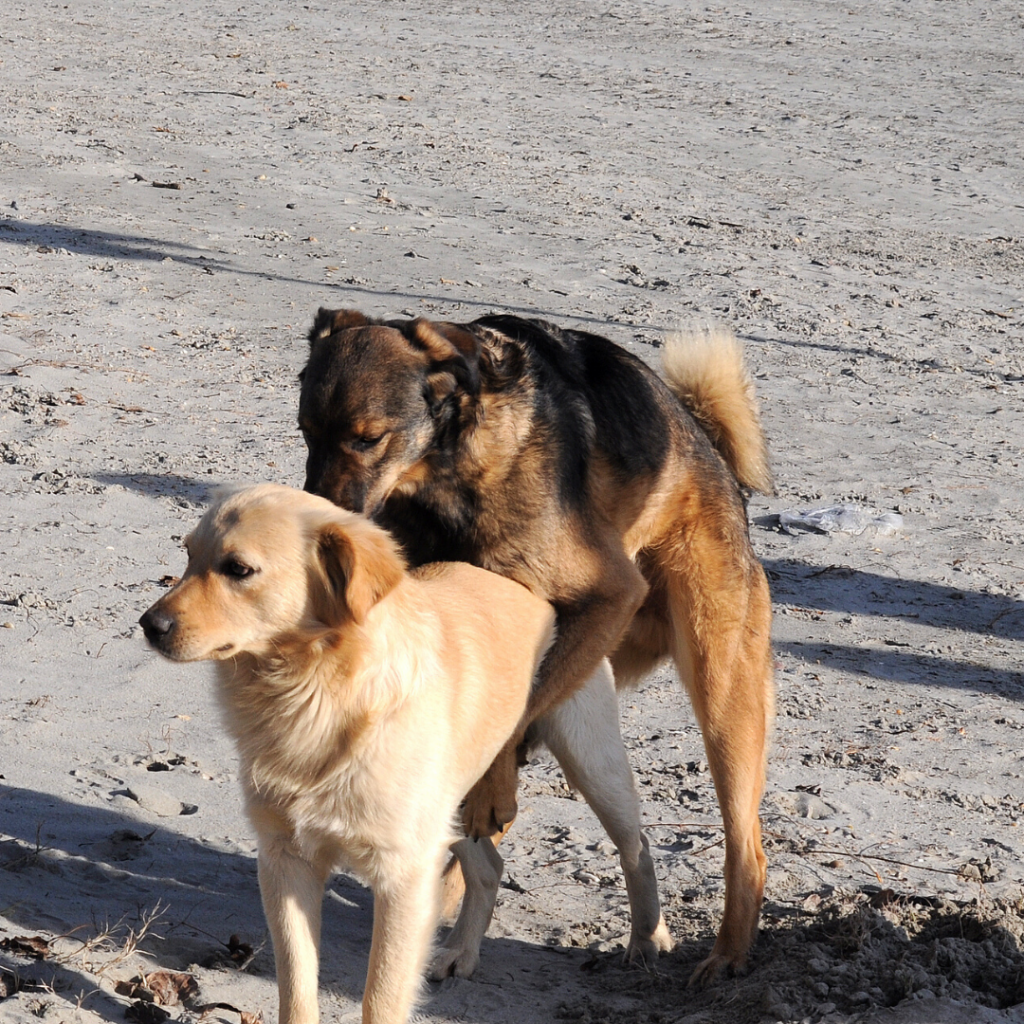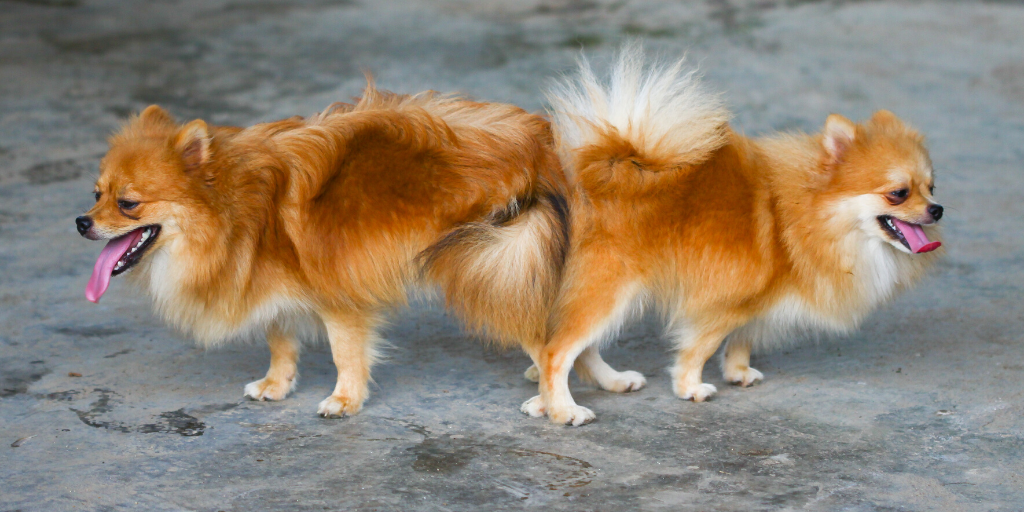At what age will my dog first come into season?
Most dogs reach sexual maturity and begin to cycle around 6 months of age, but this can vary in individuals. Large dog breeds often reach maturity much later – sometimes even as late as 12 months, while smaller breed dogs can come on heat as early as 4 months. Unlike other species, dogs are not specifically tied to seasonal cycles, and can come on heat at any time of the year, although it can take several years before their heats become regular.
What does ‘on heat’ or ‘in season’ mean?
Also known as oestrus*, ‘coming on heat’ or ‘coming into season’ is the way we describe a female dog becoming ready to mate with a male dog and reproduce. It is a 2-4 week period of time when your female dog’s hormones are change dramatically, and occurs approximately every 6 months (although this can vary). There are 4 stages:
a) Proestrus

This is the preparatory stage when the female’s body begins to change. Their vulva becomes swollen, and you may notice a blood-tinged discharge from her vulva. This not always obvious because she will also lick her vulva frequently – and in some cases will lick before you notice a discharge. In other dogs, you may find yourself needing doggy nappies to contain the flow and prevent her making a mess. Every dog is different. You may notice her behaviour changes and she becomes a little clingy. In hormonal terms, the female dogs oestrogen levels begin to rise, peak slightly and begin to decline. This stage lasts around 9 days in a dog.
b) Oestrus.
This stage is the receptive, ready to mate stage and lasts around 9 days. There is less discharge in this stage, but the female is receptive to other males. She will often urinate more than usual and you may find her behaviour becoming aggressive towards other females and just behaving “out of sorts”. This is the most fertile stage and ovulation occurs within 2-3 days of this stage. Both progesterone and oestrogen decline during this phase. Female dogs may be more likely to escape and wander in search of a male, and male dogs are more likely to break INTO your backyard – so dont leave her unsupervised!

c) Dioestrus.
This period lasts about 2 months, as your dog’s body returns to normal, (or begins a pregnancy.) Progesterone levels rise, whether your dog is pregnant or not, but the vaginal discharge will disappear and her vulva should return to normal over this period. As both pregnant and non-pregnant dogs have a rise in progesterone, we often see a “false pregnancy” in dogs who are not pregnant. These dogs can show weight gain, mammary development and even nesting behaviour, despite not being pregnant.
d) Anoestrus.
This is the period of time when your dog is not on heat. Behaviour, vulva and discharge should all return to normal, and this period can last from 3-6 motnhs.
How often will my dog come in heat?
This can vary from dog to dog. Smaller dogs can come into heat every 3 or 4 months, while giant breed dogs (think Great Danes) may only come into heat once every 12 months. In general, the average dog usually comes on heat every 6 months.
For more information about when you should desex your dog, please CLICK HERE and see our page on “At what age should I desex my dog?”

